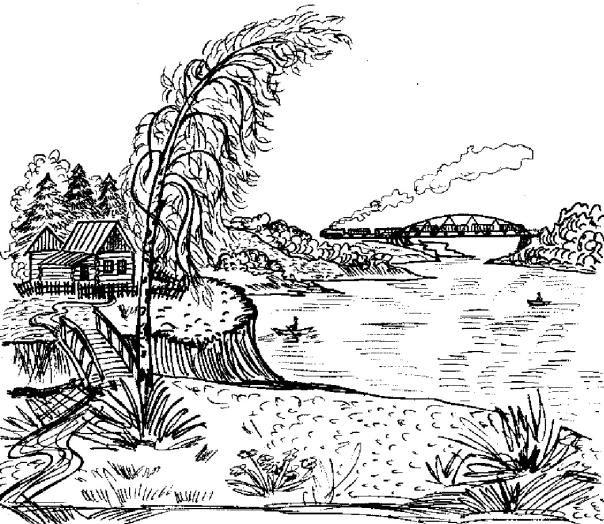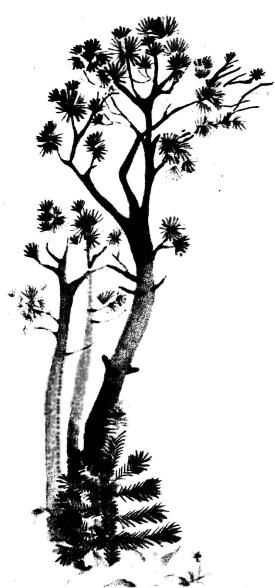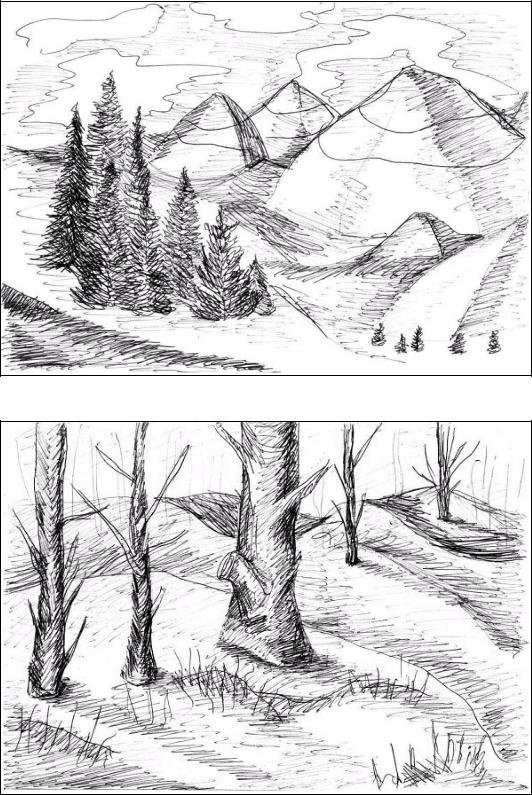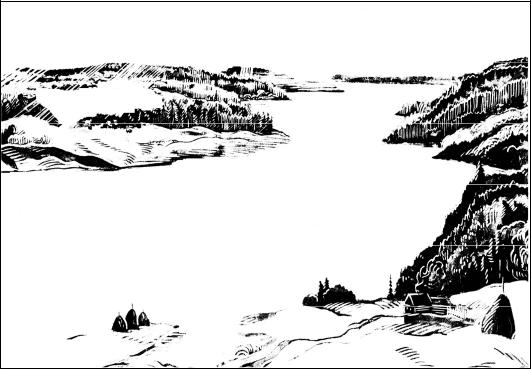
2579
.pdf
И. Н. Ефименко, Л. Б. Александрова, И. В. Бреус, М. А. Сидорова, Е. В. Лобкова, О. А. Вершинина, С. А. Рассада, И. Н. Суслов
Our Siberia
Наша Сибирь
Федеральное агентство по образованию Сибирская государственная автомобильно-дорожная академия (СибАДИ)
И. Н. Ефименко, Л. Б. Александрова, И. В. Бреус, М. А. Сидорова, Е. В. Лобкова, О. А. Вершинина, С. А. Рассада, И. Н. Суслов
Our Siberia
Наша Сибирь
Учебное пособие по английскому языку для студентов сибирских вузов
Омск Издательство СибАДИ
2006
УДК 811.111+94(57) ББК 81.432.1 Н 37
Рецензенты: 1. А. Д. Колесников, д-р истор. наук, проф.
2.С. К. Федонькина, канд. филол. наук, доц.
3.М. В. Моисеев, канд. филол. наук, доц.
Работа одобрена редакционно-издательским советом академии в качестве учебного пособия по английскому языку для студентов I, II курсов всех специальностей.
Наша Сибирь: Учебное пособие по английскому языку для студентов сибирских вузов / И. Н. Ефименко, Л. Б. Александрова, И. В. Бреус, М. А. Сидорова, Е. В. Лобкова, О. А. Вершинина, С. А. Рассада, И. Н. Суслов. – Омск: Изд-во СибАДИ, 2006. – 148 с.
Содержательную основу пособия составляет богатый регионоведческий материал: аутентичные тексты по истории Сибири из журналов, газет, книг. Коммуникативное направление и привлекательные, с содержательноинформационной точки зрения, атрактивно-методически разработанные упражнения обеспечивают систематизированный тренинг всех видов речевой деятельности. Предназначена для студентов сибирских вузов.
|
© И. Н. Ефименко, Л. Б. Александрова, |
|
И. В. Бреус, М. А. Сидорова, |
|
Е. В. Лобкова, О. А. Вершинина, |
ISBN 5 – 93204 – 250 – 8 |
С. А. Рассада, И. Н. Суслов, 2006 |
ОГЛАВЛЕНИЕ
Part I. SIBERIA. ITS CLIMATE AND RESOURCES


 5
5
Part II. SIBERIAN INHABITANTS AND HISTORY


 32
32
Part III. EXCURSION TO SIBERIAN CITIES AND TOWNS


 68
68
Part IV. OMSK


 103
103
ADDITION






 126
126
ENGLISH-RUSSIAN VOCABULARY


 145
145
BIBLIOGRAPHY


 147
147
Посвящается 75-летию Сибирской государственной автомобильно-дорожной академии (СибАДИ).
This book is devoted to the 75th anniversary of the Siberian Automobile and Highway Academy.
Данное учебное пособие регионального характера составлено с учетом требований Государственного образовательного стандарта высшего профессионального образования.
Основные задачи пособия – сформировать у студентов технического вуза языковую и коммуникативную компетенции, а также расширить и систематизировать знания о родном крае.
Таким образом, в пособии «Наша Сибирь» реализуется инновационный интегративный подход (соединение приемов и методов обучения английскому языку с текстовыми и иллюстративными материалами краеведческого содержания).
Впособии представлены темы, связанные с историей, природой, образованием, наукой и культурой Сибири («Климат и природные богатства Сибири», «Экскурсия по городам Сибири», «Знаменитые сибиряки» и т.
д.).
Вкаждой тематической части уделено внимание развитию и совершенствованию навыков чтения (изучающего, ознакомительного, просмотрового), письма (заполнение таблиц, составление ежедневника, рекламы, карт, туристических маршрутов и т. д.), говорения спонтанного и подготовленного, монологического и диалогического (оценка событий, фактов, сообщения доклады, сценки, интервью, деловые и ролевые игры и т. д.).
Особо актуальным в данном пособии является наличие проектных задний. При работе над проектом рекомендуется использовать приложение, которое включает в себя фотографии, рисунки, материалы из газет, рецепты сибирской кухни, краткие биографические очерки, гербы сибирских городов.
Следует отметить, что наряду с языковыми и речевыми упражнениями широко применяются коммуникативные задания, так как они предполагают работу в разных режимах (студент-студент, студент-группа, группа-группа и т. д.), ориентацию учебного процесса на содержание, творческую активизацию обучаемых.
Авторы

Part I
SIBERIA. ITS CLIMATE AND RESOURCES
Lead-in:
What picture appears in your mind when you hear the word "Siberia"? Describe it in a few sentences.
Text 1
1.Would you mark the position where Siberia is on a map? Indicate all the rivers and oceans mentioned in the text, please (даётся контурная карта).
2.Read the following words and learn them by heart:
mighty – громадный extension – протяженность outskirt – окраина steppeland – степь plateau – плоскогорье settlement – поселение
3. Read the text and compare your image of Siberia with the author's one:
SIBERIA
The very thought of Siberia brings up a mental picture of a land of vast plains, huge mountain ranges, mighty rivers, endless forests and colossal mineral deposits. Its 10 million square kilometers of territory stretch from the Ural Mountains to almost the edge of the
5
Pacific Ocean. The extension of its boundaries is more than 14 thousand kilometers. In size Siberia is bigger than Australia, and only half its territory is enough to accommodate all the countries of Western Europe. When midnight settles on the eastern outskirts of Siberia, it is only five o' clock in the afternoon on Siberia's western edge.
Most of Siberia is taiga forestland. To the north of the taiga there is a narrow belt of forest-tundra and tundra. In the south the taiga gradually gives way to a steppeland extending westward in a solid massif, and eastward in small islands. There are great mountain ranges and plateaus in the south, southeast and east of Siberia. Siberia is so immense that the seasons overlap in it: when fruit trees blossom and fields turn green in the steppe regions, northern Siberia is still in the grip of severe frosts.
The entire seaboard of Siberia faces the Arctic Ocean and it is icebound for the greater part of the year. Siberia is separated from the Pacific Ocean by tall mountains, and the Atlantic is so far away that its influence is hardly felt at all even in the westernmost regions. That explains why the climate is dry and extremely rigorous. On Oimyakon Plateau in the northeast of Siberia the temperature drops to as low as 71º below zero. The Poles of Cold of the Northern Hemisphere are located there. In the southern half of Siberia the summers are short, hot and sunny, with the temperature rising to 35-40°. This makes it possible to grow many crops much farther north than usual.
Siberia is rich in rivers. The Ob, the Yenisei and the Lena, which are among the ten longest rivers in the world, run across the whole of Siberia before discharging their waters into the Arctic Ocean. Siberia has 80 per cent of Russia's water energy. The Yenisei, which annually drains 548 cubic kilometers of water into the ocean, is the largest of them all.
The taiga is retreating before the Siberian peoples, the land is yielding up its treasures to them and the mighty rivers are being harnessed to serve them. In land that was once roamed by nomads, new cities and modern settlements have been built.
4.Answer the following questions:
1.What factors determine the climate in Siberia?
2.What types of scenery can be found here?
3.Do you agree that climate and scenery can influence the density of population?
4.How can you characterize the density of population in Siberia in comparison with the European part of the country?
5.What can attract people from other parts of the country to Siberia?
6.What opportunities of development does Siberia have?
6
5.Complete the sentences:
1.The total area of Siberia is … .
2.The climate is … .
3.The lowest temperature at the Poles of Cold is … .
4.Siberia is rich in … .
5.The largest Siberian river is … .
6.Siberia is washed by … .
6.Divide the following adjectives into groups according to the main characteristics of climate (humidity, temperature and etc):
Arctic, continental, damp, dry, frigid, maritime, mild, moderate, rigorous, severe, subtropical, temperate, tropical, warm, wet
Are there any synonyms between them?
7. Put the following words into the correct sentences. Use each word once only:
discharging, extending, rising
1.The Ob, the Yenisei and the Lena, which are among the longest rivers in the world, run across the whole of Siberia before ... their waters into the Artic Ocean.
2.In the southern half of Siberia the summer are short, hot and sunny, with the temperature ... to 35 – 40c.
3.In the south the taiga gradually gives way to a steppeland ... westward in a solid massif, and eastward in small islands.
8.Define whether the sentences below are true or false. Begin your answers with the following expressions:
That is right. Exactly so. I agree with it. I am afraid that is not correct. Nothing of the kind.
1.In size Siberia is smaller than Australia, and only half its territory is enough to accommodate all the countries of Western Europe.
2.The extension of its boundaries is more than 15 thousand kilometres.
3.Most of Siberia is taiga forestland.
4.Siberia is not rich in rivers.
5.Siberia has 90 per cent of Russia’s water energy.
7

9. Match the pictures to the sentences. What does it in each sentence refer to?
1.
2.
8

3.
a)There are great mountain ranges and plateaus in the south and east of Siberia.
b)Most of Siberia is taiga forestland.
c)Siberia is rich in rivers. The Ob, the Yenisei and the Lena run across the whole of Siberia before discharging their waters into the Arctic Ocean.
10.In pairs, compare the pictures. Where would you prefer to stay while on holiday? Why? When you describe a place, you can give examples of what you can see, hear and smell. This makes the description more interesting.
11.Ask your friend to prove that most of Siberia is taiga forestland. Use the following word combinations:
to the north of the taiga in the south the taiga
there is a narrow belt of forest – tundra
12. Prove the following statement using information from the text:
Siberia is rich in rivers.
13. What are advantages and disadvantages of living in Siberia? Prove your point of view.
9
